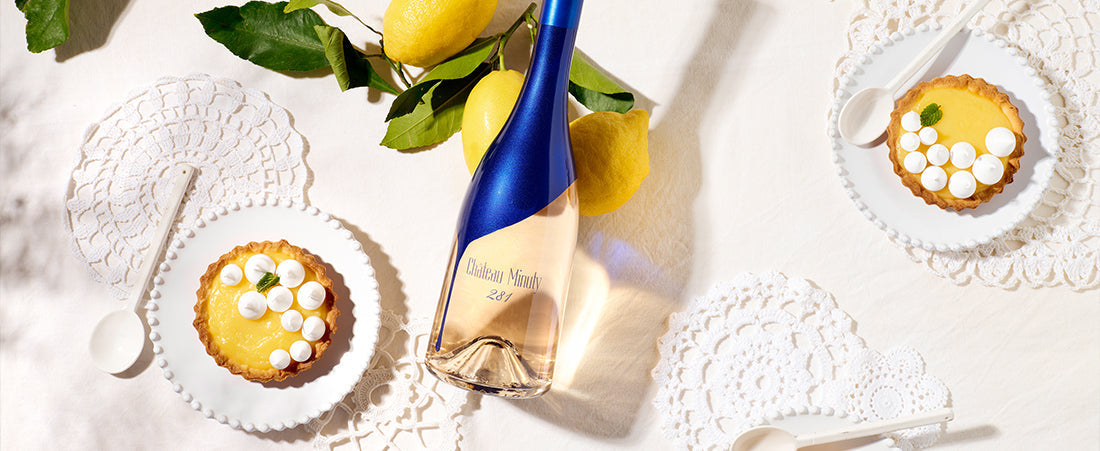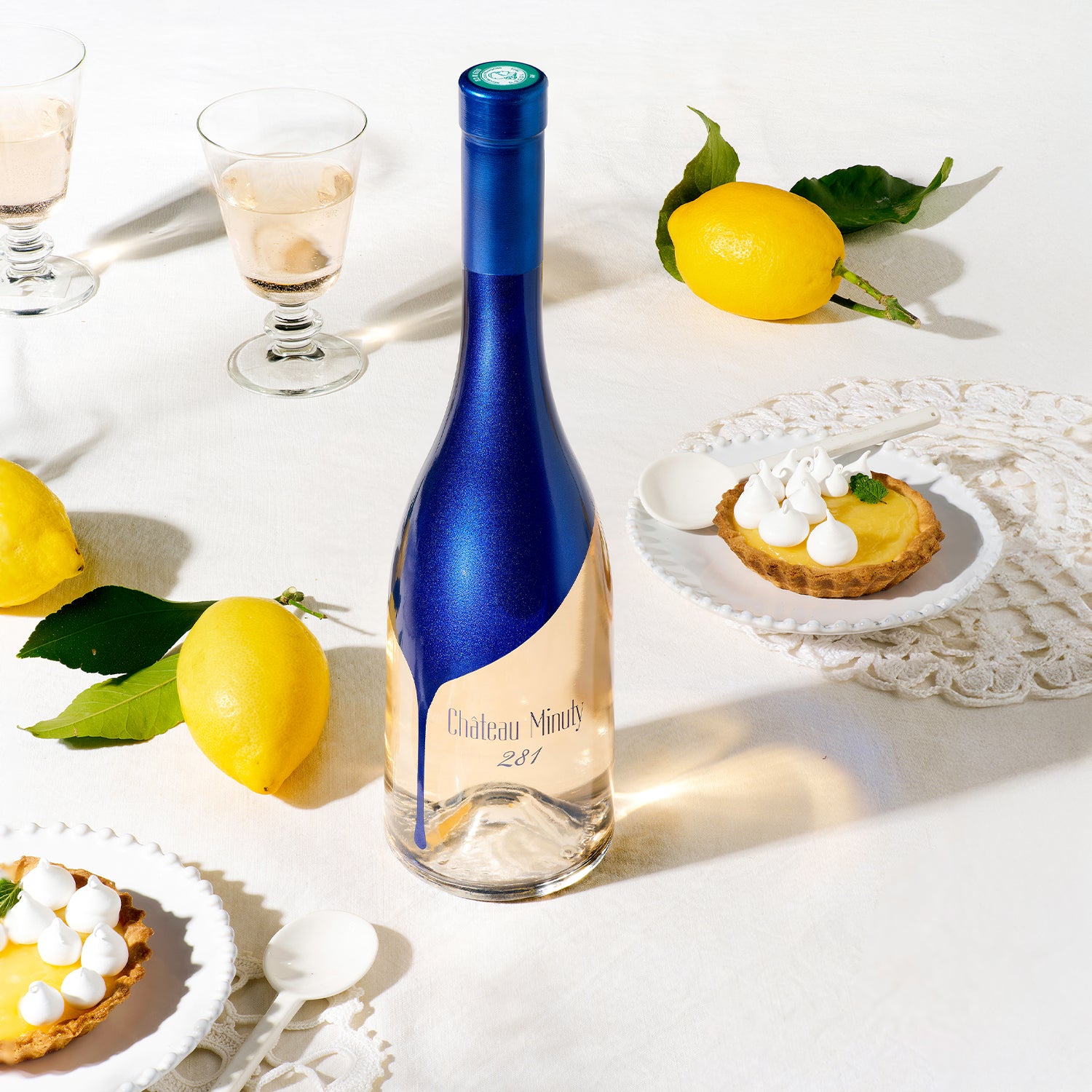Lemon tartlets: a sweet and tangy combination based on Château Minuty 281


 In this recipe, combine homemade shortcrust pastry with a rich buttery flavor and tangy, creamy lemon cream! These elegant lemon tarts are served here with a Château Minuty 281, which reveals subtle aromas of citrus and exotic fruits, complemented by notes of white currant.
In this recipe, combine homemade shortcrust pastry with a rich buttery flavor and tangy, creamy lemon cream! These elegant lemon tarts are served here with a Château Minuty 281, which reveals subtle aromas of citrus and exotic fruits, complemented by notes of white currant.
Ingredients for 6 tartlets:
For the shortcrust pastry:
- 250 g of flour
- 150 g of cold unsalted butter, cut into cubes
- 50 g of icing sugar
- 1 egg yolk
For the lemon cream:
- 15 cl of lemon juice (3 or 4 lemons)
- The grated zest of 1 organic lemon, or untreated after harvest (optional, according to taste)
- 150g sugar (or less, according to your taste)
- 3 eggs
- 1 tbsp cornstarch
- 75 g of soft butter
For the Swiss meringue:
- 2 egg whites (approx. 60 g)
- 125 g caster sugar
Preparation steps:
1. Prepare the shortcrust pastry: In a bowl, mix the flour and icing sugar. Add the cold butter cubes and rub the mixture between your hands.
2. Add the egg yolk and 2 tablespoons of water. Knead the dough a little to combine the ingredients, then form a ball. Wrap it in plastic wrap and refrigerate for about 30 minutes.
3. After this time, roll out the dough on a floured work surface. Butter and flour tartlet molds. Preheat your oven to 180°C (gas mark 6).
4. Cut out circles of pastry, slightly larger in diameter than the molds. Fill them with the pastry, scallop the edges, and prick the bottoms with several fork pricks. Cover the tartlet bases with parchment paper and dried vegetables or metal balls. Bake for 10 minutes.
5. Remove the paper and weight, then bake the tartlets for about 8 minutes, until the pastry is golden brown. Remove from the oven and set aside.
6. Prepare the lemon cream: in a saucepan, bring the lemon juice to a boil, possibly with the grated zest.
7. Whisk the eggs with the sugar and cornstarch, then gradually add the lemon juice in a thin stream, whisking constantly.
8. Return everything to the saucepan over medium heat and thicken, stirring constantly, until it becomes creamy. Let cool.
9. Then add the soft butter in pieces, whisking well.
10. Fill the cooled tartlet bases. Refrigerate.
11. Make the Swiss meringue: In a large, heat-resistant bowl, whisk together the egg whites and sugar. Place the bowl over a double boiler—the bowl should not touch the water.
12. Mix the egg whites and sugar with a hand whisk over a bain-marie, but without whipping, until they reach about 50°C (if you don't have a thermometer, you should be able to dip your finger in and feel that it is very hot, without it burning).
13. When the meringue is at the right temperature, beat it with an electric mixer on medium to high speed for 10 to 15 minutes, until the bowl has cooled. The meringue should be very glossy.
14. Fill a piping bag fitted with a round nozzle. Line a baking sheet with greased parchment paper (the meringue is very sticky). Place small meringues (no more than 2 cm in diameter) on the baking sheet. Bake for approx. 15 min (depending on the size of the meringues) in an oven at 90°C.
Choosing the right lemons
Like all citrus fruits, lemons grow in winter in our latitudes, in the Nice region or in Corsica. Often organic, their rind is neither waxed nor treated after harvesting. Their zest can therefore be used in recipes and eaten. Menton lemons are available year-round, lasting until June. Incomparable to the taste, French lemons, and especially the Menton lemon, have a truly delicious lemon flavor, a fragrant and sweet flavor, and little acidity. Sicilian lemons are also renowned for their sweet and refreshing flesh.
Choose lemons that are heavy and bright yellow, both indicators of their ripeness. This will make their flavor more subtle and will also yield more juice.
If you include zest in your recipe, always choose organic lemons, or those that have not been treated after harvest.
Lemon or lime, what’s the difference?
With a fresher, more acidic taste, limes offer a more exotic flavor. A good, perfectly ripe lemon has a sweeter, softer flesh. Nothing prevents you from combining them, for example, by collecting the juice of lemons and the zest of limes.
Download the recipe
